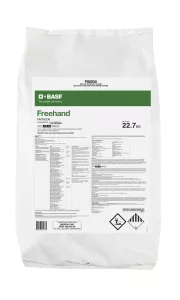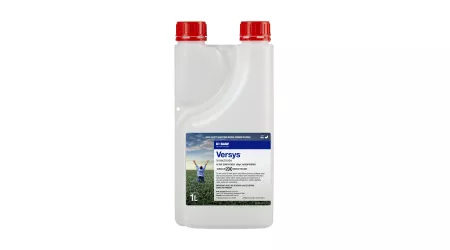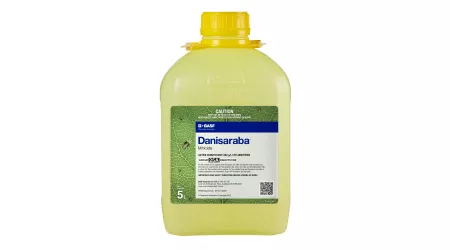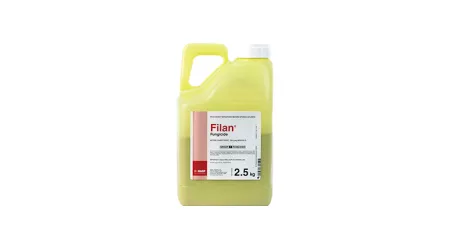Key benefits
- Broad spectrum weed control
- Easy to use
- Excellent residual control
How to use
Ornamentals
Freehand may be applied individually to each pot, or pots can be grouped together and distributed using a granule applicator or gloved hand. After application, ensure granules are brushed or washed off foliage. Apply evenly over the area or pots to be treated preferably using a properly calibrated mechanical granule spreader. Apply to the surface of weed free soil preferably after cultivation or just after potting up. Freehand will not control established weeds. Apply to dry foliage only and then sprinkler irrigate or hose (10-15 mm) to wash granules from foliage and incorporate the herbicide into the soil. One application will last for 2-3 months depending upon rainfall, irrigation, soil type (potting mix), temperature and weed seed burden. Retreat when the first signs of weed growth are seen but no sooner than 2 months and no later than 3 months after the first application. Do not apply Freehand 2 weeks prior to or 2 weeks after leaf bud break or during periods of flush growth. Newly formed leaves are sensitive to this product. Spotting or leaf drop may result from such applications. Do not apply directly on to bare roots of woody ornamentals as injury may occur.
Turf
Ensure area is clean of debris prior to application. Freehand may be applied and distributed using a granule applicator or gloved hand. Oscillating spout or rotary type fertiliser spreaders are recommended for large areas.
Even application is important for good weed control. If using a granule applicator, ensure they are properly calibrated to apply granules evenly. Freehand application should be followed by irrigation or rainfall, before weeds germinate. If Freehand is not activated by rainfall or irrigation within 30 days, erratic weed control may result.
Crop suitability
-
Ornamentals
AmaranthAnnual nettlesAnnual ryegrassAwnless barnyard grassBarnyard grassBittercressBlackberry nightshadeBladder ketmiaBrazilian white-eyeButton grassCaltropChickweedCommon heliotropeCommon verbenaCreeping oxalisCrested goosefootCrowsfoot grass / crabgrassCudweedDandelionDead nettleDwarf amaranthEarly spring grassFat henFleabaneFlickweedFumitory (Fumaria spp.)Giant or black pigweedGreen amaranthGreen fat henGreen summer grassGuinea grassIndian hedge mustardLiverseed grassLiverwortMintweed (supression)Mossman River grassNative milletPale pigeon grassPaspalidiumPennyroyalPepper grassPeppercressPigweedPoa trivialisPrickly lettuceQueensland blue grassRed caustic creeper / Petty spurgeRed flinders grassScarlet pimpernelScrambling speedwellShepherd's purseSignal grassSmall burr grassSow thistle / Milk thistleStagger weedStink grassStonecropSubterranean cloverSummer grassToad rushTurnip weedWeeping love grassWhite cloverWild hopsWild mustardWild radishWillow herbWinter grassWireweed -
Turf
AmaranthAnnual nettlesAnnual ryegrassAwnless barnyard grassBarnyard grassBittercressBlackberry nightshadeBladder ketmiaBrazilian white-eyeButton grassCaltropChickweedCommon heliotropeCommon verbenaCreeping oxalisCrested goosefootCrowsfoot grass / crabgrassCudweedDandelionDead nettleDwarf amaranthEarly spring grassFat henFleabaneFlickweedFumitory (Fumaria spp.)Giant or black pigweedGreen amaranthGreen fat henGreen summer grassGuinea grassIndian hedge mustardLiverseed grassLiverwortMintweed (supression)Mossman River grassNative milletPale pigeon grassPaspalidiumPennyroyalPepper grassPeppercressPigweedPoa trivialisPrickly lettuceQueensland blue grassRed caustic creeper / Petty spurgeRed flinders grassScarlet pimpernelScrambling speedwellShepherd's purseSignal grassSmall burr grassSow thistle / Milk thistleStagger weedStink grassStonecropSubterranean cloverSummer grassToad rushTurnip weedWeeping love grassWhite cloverWild hopsWild mustardWild radishWillow herbWinter grassWireweed
Stewardship Training
To access training for Freehand herbicide, please complete the form below and follow the onscreen instructions.




